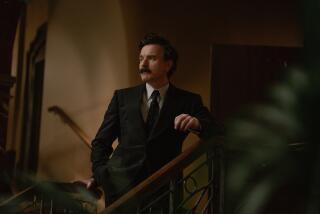RUSSIA : Luxury Homes, Moscow View, $$$$$$ a Month
- Share via
MOSCOW — One hand resting on a polished mahogany table, the other gesturing grandly toward an appliance-filled kitchen, Leonid Volodarsky proudly repeated his favorite movie sound bite. “As Dorothy said when the tornado blew her to Oz, ‘Toto, I don’t think we’re in Kansas anymore,’ ” he recited, beaming and rocking his feet on the plush gray wall-to-wall carpet.
As leasing manager for a development of luxury townhouses, Volodarsky must persuade foreigners to shell out astronomical sums for a corner of Oz-like charm in the midst of Moscow’s bleakness.
So far, he’s had remarkable success. He has already rented 30 of the first 40 units--priced at $60,000 to $100,000 a year--to be built in Seytun Townhouse Community, a Russian-American joint venture that will contain 118 residences, a health club, grocery store, restaurant and day-care center.
Sealed off by a tall fence, Seytun is just one of a handful of high-priced developments springing up to offer foreign executives a Western-style home in a decidedly un-Western capital.
Another luxury development, the Rosinka Residential Community, will house 40 families from the U.S. Embassy next year. Built on a former collective farm about 15 miles northwest of Moscow, the plush, U.S.-made townhouses rent for $45,000 to $82,000 a year--a price that makes even embassy officials flinch.
“U.S. taxpayers are really taking it on the chin,” one U.S. official who deals with housing said. “The prices are atrocious. But we have to find places to put people who are arriving soon.”
For years, a central government agency provided housing for all foreigners in Moscow, assigning them slightly-nicer-than-usual Soviet apartments in special compounds and keeping close tabs on their movements through KGB guards. The U.S. Embassy still rents scores of these apartments for its 300 U.S. employees, at an average cost of $12,000 a year.
But foreigners living in government-allocated apartments complained of Soviet maintenance problems--from stuffy, overheated rooms to monthlong stretches without hot water to plumbers who demanded payment in vodka before beginning work. And families found even the four-room apartments, palatial by Russian standards, cramped and restrictive.
Because of sub-standard accommodations, some foreign firms had been reluctant to send top executives on long assignments to Moscow, businessmen here acknowledge. But now that the market has burst open, private joint ventures are competing to lure foreign investors to Russia with previously unheard-of amenities like garbage disposals, walk-in closets and heated garages. The most upscale homes boast bathrooms with saunas and hot tubs.
The prices seem out of line with the Moscow real estate market, where foreigners can privately rent downtown studios for as little as $125 a month and spacious four-room apartments for only $700 a month.
But often these private deals are short-term and may not come complete with official documentation, exposing the foreign tenant to sudden rent hikes and leaving him dependent on the landlord to organize repairs in the flat that may still be state-owned.
And the wait for three- and four-room apartments from the government’s chief administration for service to the diplomatic corps, the official landlord for foreigners, is years long. So, aside from camping out in a hotel suite, foreign executives often have few options.
After a year in a standard Russian apartment, on the eighth floor of a squat concrete building situated next to one of Moscow’s rowdiest flea markets, German executive Frank Lessenich said he was so disgusted that he readily agreed to pay four times his accustomed rent to move to one of the Seytun townhouses.
“The prices are rather high, but that’s the market” said Lessenich, the Moscow manager for Hoechst Chemical Co. “If I had tried to negotiate a better deal, someone else would have taken my house.”
Rosinka--which has already leased all 72 townhouses to be built by year’s end--is constructing a dam in a nearby river to give every home a lake view. Seytun developers are frantically planting shrubs to soften the line of drab apartment buildings visible from most townhouse windows. And Molint, a Danish-Russian joint venture building 30 bungalows in northeast Moscow, boasts that every yellow brick and every red roof tile comes from Denmark. Margot Maertens, 30, who moved from Holland to Rosinka with her husband, an executive at the Dutch pharmaceutical company Organon International, observed of the luxury development, “This is really the best option for Western people--it’s near a forest, the air is clean, and it’s a real house with a garden in front and lots of space.”
More to Read
Sign up for Essential California
The most important California stories and recommendations in your inbox every morning.
You may occasionally receive promotional content from the Los Angeles Times.










